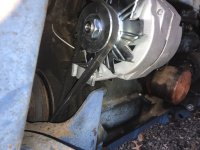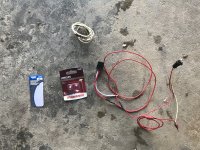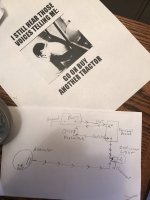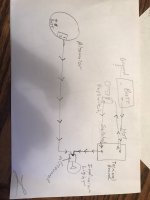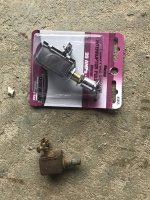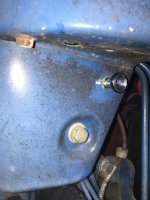OP
lennyzx11
Veteran Member
- Joined
- Dec 20, 2015
- Messages
- 1,257
- Location
- Bennington Vermont
- Tractor
- Kubota L3301 HST/LA525 & 1964 Ford 2000 gas
On to the physical mounting. We will come back to the wiring in a bit.
As said before, this was straight forward. Remove the old generator top bracket bolts, bottom bracket bolts and remove the generator. Now remove the brackets from the engine block but keep the bolts.
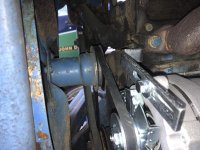



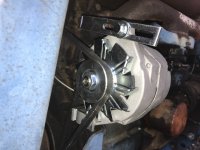
My kit came with brackets. I have read that you can flip the original generator lower bracket, shim the alternator in line with flat washers and bolt it with a long all thread or stud with nuts.
I didn’t do that.
I have power steering so I had the extra step of removing the power steering belt in order to replace the generator belt with a new slightly longer one for the alternator. I don’t have id numbers for this or length. When I find that info, I’ll add it here.
I pulled one cotter pin and used a pin punch to remove and replace the mounting pin on the power steering pump.
Fairly easy stuff. I pulled the belt back with my hands “good nuff” and tightened the bolt.
Next. I’ll connect that existing indicator light.
As said before, this was straight forward. Remove the old generator top bracket bolts, bottom bracket bolts and remove the generator. Now remove the brackets from the engine block but keep the bolts.





My kit came with brackets. I have read that you can flip the original generator lower bracket, shim the alternator in line with flat washers and bolt it with a long all thread or stud with nuts.
I didn’t do that.
I have power steering so I had the extra step of removing the power steering belt in order to replace the generator belt with a new slightly longer one for the alternator. I don’t have id numbers for this or length. When I find that info, I’ll add it here.
I pulled one cotter pin and used a pin punch to remove and replace the mounting pin on the power steering pump.

Fairly easy stuff. I pulled the belt back with my hands “good nuff” and tightened the bolt.
Next. I’ll connect that existing indicator light.
Attachments
Last edited:
